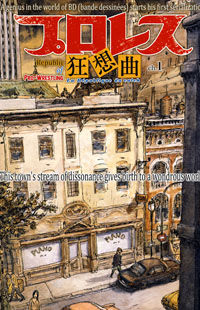Station Eleven by Emily St. John Mandel is a hauntingly beautiful exploration of art, memory, and the human spirit in the face of catastrophic change. Set against the backdrop of a world ravaged by a deadly pandemic, the novel weaves together the lives of several characters, creating a tapestry that reflects the fragility of civilization and the enduring power of storytelling. Mandel's narrative is both intricate and lyrical, inviting readers to ponder the significance of art and connection in a world that has seemingly lost everything.
The story begins with a gripping scene: a famous Hollywood actor, Arthur Leander, collapses on stage during a performance of King Lear. This moment serves as the catalyst for the unraveling of society, as the deadly Georgia Flu spreads rapidly, decimating the population. Mandel's choice to open with such a dramatic event immediately captures the reader's attention, setting the stage for a narrative that oscillates between the past and a post-apocalyptic future. The timeline shifts seamlessly, allowing readers to glimpse Arthur's earlier life, his relationships, and the impact of his death on those who loved him.
One of the novel's central themes is the importance of art and culture in human existence. The Traveling Symphony, a group of actors and musicians who traverse the desolate landscape of the Great Lakes region, embodies this theme. Their motto, "Survival is insufficient," reflects a profound understanding that mere existence is not enough; the characters seek to preserve the beauty of art and the connections it fosters. Through their performances of Shakespeare and classical music, they bring a semblance of hope and humanity to a world stripped of its former glory. Mandel's portrayal of the Symphony serves as a poignant reminder that even in the darkest times, art can provide solace and meaning.
The character development in Station Eleven is masterfully executed. Each character is richly drawn, with their own histories, desires, and fears. Arthur Leander, though deceased for much of the novel, casts a long shadow over the lives of those he touched. His first wife, Miranda, is an artist whose creation of a graphic novel titled Station Eleven becomes a symbol of hope and resilience. The novel within the novel serves as a meta-commentary on the power of storytelling, illustrating how narratives can transcend time and space, connecting individuals across generations.
Jeevan Chaudhary, the man who attempted to save Arthur on stage, is another pivotal character. His journey from a paramedic to a survivor in the post-apocalyptic world highlights the theme of transformation. As he grapples with his past and the choices he made, Jeevan embodies the struggle for identity in a world that has been irrevocably altered. His character arc is a testament to the resilience of the human spirit, as he learns to navigate the new reality while holding onto the memories of the life he once knew.
The novel also introduces Kirsten Raymonde, a young actress who becomes a member of the Traveling Symphony. Kirsten's perspective offers a glimpse into the world after the collapse, where the remnants of civilization are both haunting and beautiful. Her obsession with Arthur's legacy and the graphic novel serves as a driving force in her character development. Through Kirsten, Mandel explores the theme of memory and how it shapes our understanding of the past. The juxtaposition of her youthful innocence with the harsh realities of survival creates a compelling narrative tension.
Another significant character is the self-proclaimed prophet, who poses a threat to the Symphony and embodies the darker aspects of human nature. His presence raises questions about faith, power, and the moral complexities that arise in times of crisis. Mandel skillfully contrasts the prophet's authoritarianism with the Symphony's commitment to community and art, highlighting the choices individuals must make when faced with the collapse of societal norms.
The prose in Station Eleven is exquisite, with Mandel's lyrical style elevating the narrative. Her vivid descriptions of the post-apocalyptic landscape evoke a sense of both beauty and desolation, immersing readers in a world that is at once familiar and alien. The imagery is striking, and the emotional depth of the characters resonates long after the final page is turned. Mandel's ability to blend elements of science fiction with literary fiction creates a unique reading experience that transcends genre boundaries.
In comparing Station Eleven to other works of post-apocalyptic fiction, it stands out for its focus on the human experience rather than the mechanics of survival. While novels like Cormac McCarthy's The Road delve into the brutality of a collapsed world, Mandel's narrative emphasizes the importance of connection, art, and the memories that bind us. Similarly, in works like Octavia Butler's Parable of the Sower, the exploration of community and resilience is central, but Mandel's approach is more elegiac, offering a sense of hope amidst despair.
Ultimately, Station Eleven is a profound meditation on what it means to be human in a world that has lost its way. It challenges readers to consider the role of art in our lives and the ways in which we find meaning in the face of adversity. Mandel's novel is not just a story of survival; it is a celebration of the enduring power of creativity and the connections that define us. As we navigate our own tumultuous times, Station Eleven serves as a poignant reminder that even in the darkest moments, the light of art and humanity can shine through.
In conclusion, Emily St. John Mandel's Station Eleven is a masterful work that resonates deeply with readers, offering a rich exploration of themes that are both timely and timeless. It is a novel that lingers in the mind, inviting reflection on the fragility of civilization and the enduring power of storytelling.
























Reviews 0
Post a Reviews: